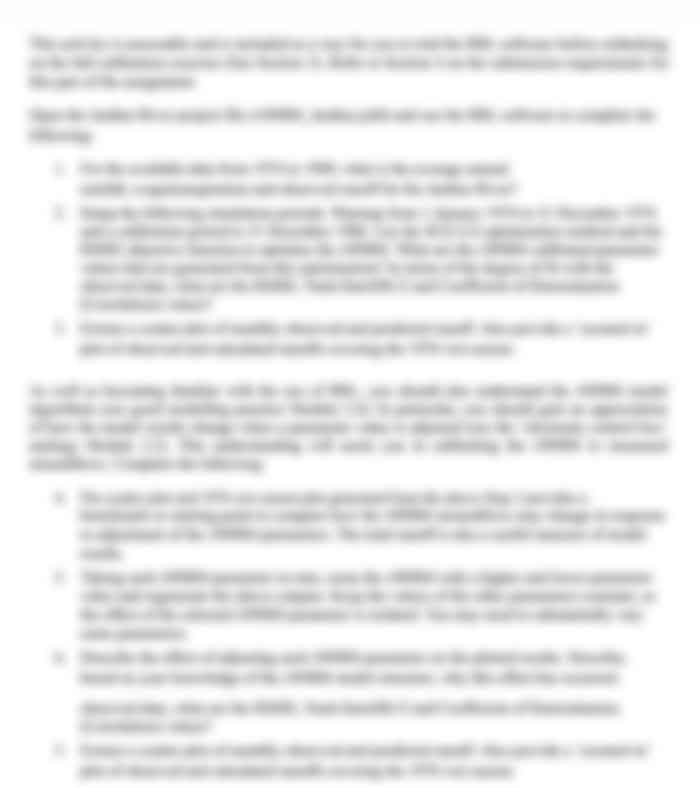PSYU3349: Design and Statistics III
- Subject Code :
PSYU3349
Background
This practical project was loosely inspired by an observational study reported by Williamson
and colleagues (2016, BMJ Open) that examined the possible roles of several variables in
predicting the mental health of Aboriginal children in New South Wales, Australial.
Although the data that will be used in this project are fictional, the project is intended to test
your knowledge of and skill in conducting statistical analyses, and to raise awareness of the
challenges that are still faced by people today with a long history of being marginalized for
their ethnicity.
In our fictitious study, the main objective will be to examine the mental health of children
from three communities as a function of several variables that are plausibly related to good
general health. To accomplish this, let's assume that a composite mental health index
(represented by the variable mhi in Stata) was administered to 100 children whom identify
as Aboriginal. The numerical scores of this measure can range from O to 100, with 100
indicating perfect mental health and O indicating serious mental health issues. We'll also
assume that we have collected data on three other variables that might be related to mental
health: (1) socioeconomic status (ses) as measured using annual family income; (2) whether
the child's school supports the performing arts (art, with 1 = no and 2 = yes); and (3) which
of three Australian states from which the data were collected (state, with I = Queensland, 2
= Victoria, and 3 = New South Wales).
Research Question #1: Previous research indicates that children's mental health is positively
correlated with their family SES. Previous research also suggests that a child's mental health
tends to be better if their school supports the performing arts (e.g., music, theatre, dance).
Therefore, in our imaginary sample of children, is support of the performing arts predictive
of children's mental health after controlling for SES?
Research Question #2: For a variety of reasons (e.g., differences in how mental health
problems are identified and treated), it is reasonable to predict that a child's mental health
might vary as a function of whether the child resides in Queensland, Victoria, or New South
Wales. Test this hypothesis and indicate any state-related differences in children's overall
mental health.
Research Question #3: Building upon Research Question 2, is there an overall effect of state
on mental health after controlling for SES?
The Practical Project Task
Your task is to conduct the appropriate statistical analyses needed to understand these data
and address the research questions above, and to write up your findings in a formal report.
This report should be written out similarly to a Results section of a research report or journal
article, following APA formatting and reporting guidelines. There are 5 individual sections
for you to include in your report (listed below). You will present a single report covering all
research questions (RQs). The report should be no longer than 7 pages in total (double-
spaced). The sections (each with its own subheading) of the Practical Project report are as
follows:
Analysis plan: This commonly comes towards the end of a Method section in an
empirical journal article. This section summarizes how the data are processed
(including anything that needs to be checked before the analyses can formally be run
and interpreted), what the key variables are for each RQ/analysis, and what analyses
are used to address the RQs. This should also include assumption testing
information and results for the formal statistical models.
Univariate and bivariate statistics: Appropriate univariate and bivariate summaries
should be presented in this section. This is necessary to communicate basic
descriptive information to the reader, and to prepare for the formal analyses.
Research Question 1: This is the formal analysis/analyses needed to address RQI.
Research Question 2: This is the formal analysis/analyses needed to address RQ2.
Research Question 3: This is the formal analysis/analyses needed to address RQ3.
Conclusion:
A one-paragraph conclusion summing up what you found. (Although
this is not common in the Results section of a paper but would instead come in the
Discussion section, it is important in this report to evaluate your capacity to interpret
your analyses.)
Are you struggling to keep up with the demands of your academic journey? Don't worry, we've got your back!
Exam Question Bank is your trusted partner in achieving academic excellence for all kind of technical and non-technical subjects. Our comprehensive range of academic services is designed to cater to students at every level. Whether you're a high school student, a college undergraduate, or pursuing advanced studies, we have the expertise and resources to support you.
To connect with expert and ask your query click here Exam Question Bank

